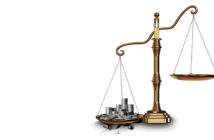Although the national economy was strong in 2017, this prosperity was not evenly distributed. According to the United States Bureau of Economic Analysis, average personal income was approximately $50,000. However, in 86 percent of American counties, average personal income is less than this. There is just a small percentage of counties with above average personal income, which pulls the national average up. Average personal income is between $50,000 and $65,000 in ten percent of counties while an ultra-prosperous three percent have average personal income between $65,000 and $195,000. These ultra-prosperous counties are concentrated in urban areas such as New York City, Boston, Los Angeles, Miami, Washington, D.C. and places with oil, such as the Texas panhandle and North Dakota.
Besides geography, a person’s prosperity is largely determined by whether or not he or she has a college degree. Prior to the recession, 28 million people over the age of 25 who only had a high school education were employed full-time, according to the United States Bureau of Labor Statistics. The recession lost 2.8 million of these jobs. Thus far in the recovery, only 275,000 have been regained. In contrast, 34 million people over the age of 25 with at least a bachelor’s degree were employed prior to the recession. During the recession, 1.2 million of these jobs were lost; but by the end of 2010, this employment had returned to its pre-recession peak. As of mid-2017, there were nine million more people with a bachelor’s degree (43 million) working full-time than prior to the recession.
A study by the Center for Education and the Workforce at Georgetown University found that 95 percent of the jobs created in the recovery went to workers who had at least some college education. However, according to the U.S. Census Bureau, only one-third of adults in the U.S. have a college degree, and only half have had any college. Thus, half (or more) of the adult population has largely missed out on economic recovery.
Male employment has been trending downward for an extended period of time, and this trend was exacerbated by the recession. In 1960, 93 percent of men aged 25-54 were employed. By 2007, this had fallen to 87 percent and the recession saw it suddenly drop to 81 percent. As of 2017, 85 percent of men aged 25-54 were employed, meaning that the male employment rate has not yet returned to its pre-recession level. In contrast, female employment has trended upward over the long run, from 54 percent in 1977 to 71.5 percent in 2017, which is not far off its pre-recession peak of 72.5 percent. Economist, Erik Hurst, found that 16 percent of men aged 25-54 without a bachelor’s degree did not work at all in 2015, compared to eight percent of men in 2000. This can be partially explained by the five million manufacturing jobs that were lost between 2000 and 2017.
The economy is doing well for many Americans. For a large number, especially those without college degrees, times are still tough.








